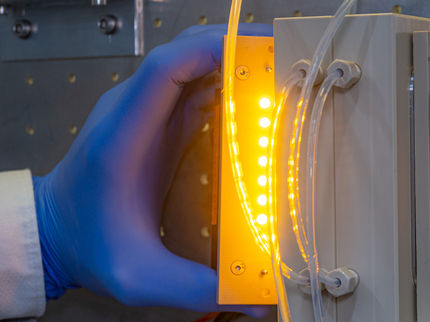Towards new reaction pathways
Insights on molecular dynamics in the ultrashort time window following UV excitation
The Attosecond Science group at the Center for Free-Electron Laser Science at DESY has developed a novel light source capable of producing extremely short pulses for the investigation of UV-induced molecular dynamics with unprecedented temporal resolution. Scientists from DESY and the University of Hamburg describe their unique observations in Nature Communications.

Nicoletta Calegari
Ultraviolet (UV) radiation penetrating our atmosphere triggers many photochemical and photobiological process in molecules, such as DNA damage. However, the absence of extremely short UV pulses has so far hindered our ability to fully capture key ultrafast mechanisms that occur at the very early stages of the light-molecule interactions. The first few femtoseconds following the light absorption are of particular importance, as this is when the concerted motion of electrons and nuclei occurs and ultimately defines molecular reactivity. A better understanding of UV-induced processes in molecules in this narrow temporal window is key to opening new reaction pathways.
In their recent work, the scientists therefore wanted to find out whether - if the UV excitation in a molecule is so fast that it occurs before the nuclei start moving - it is possible to act on the few-femtosecond timescale to influence the reactivity of the system on much longer timescales.
Using their novel light source to investigate iodomethane, a benchmark molecule for ultraviolet spectroscopy, they found that within a narrow window of about 5 femtoseconds after exciting the molecule, a second laser pulse can prevent its fragmentation. “This was never observed before because of the long duration of the UV pulse typically used for laser experiments,” says Francesca Calegari, head of the Attosecond Science group, lead scientist at DESY, professor at the University of Hamburg, and spokesperson of the Cluster of Excellence “CUI: Advanced Imaging of Matter”. Without the second pulse, the molecule inevitably dissociates.
“Our experimental observations also allowed us to confirm the validity of a theoretical model, which in turn provided precious information about the UV-induced molecular response, such as the time it takes to reach the C-I bond internuclear distance where the two electronic states of the neutral molecule can exchange populations,” co-author Vincent Wanie adds, Scientist in the Attosecond Science group.
The combined experimental and theoretical work shows how few-femtosecond UV pulses pave the way for manipulating photoproducts from neutral molecules by acting in the very first moments after photoexcitation. The scientists were able to demonstrate a new photoprotection scheme against molecular dissociation based on their findings. The approach may be adopted by other research groups to study critical phenomena triggered by ultraviolet radiation, with potential applications in areas such as photochemistry, photocatalysis and photobiology.
Original publication
Lorenzo Colaizzi, Sergey Ryabchuk, Erik P. Månsson, Krishna Saraswathula, Vincent Wanie, Andrea Trabattoni, Jesús González-Vázquez, Fernando Martín, Francesca Calegari; "Few-femtosecond time-resolved study of the UV-induced dissociative dynamics of iodomethane"; Nature Communications, Volume 15, 2024-10-25
Other news from the department science
Most read news
More news from our other portals
See the theme worlds for related content
Topic World Spectroscopy
Investigation with spectroscopy gives us unique insights into the composition and structure of materials. From UV-Vis spectroscopy to infrared and Raman spectroscopy to fluorescence and atomic absorption spectroscopy, spectroscopy offers us a wide range of analytical techniques to precisely characterize substances. Immerse yourself in the fascinating world of spectroscopy!

Topic World Spectroscopy
Investigation with spectroscopy gives us unique insights into the composition and structure of materials. From UV-Vis spectroscopy to infrared and Raman spectroscopy to fluorescence and atomic absorption spectroscopy, spectroscopy offers us a wide range of analytical techniques to precisely characterize substances. Immerse yourself in the fascinating world of spectroscopy!



























































